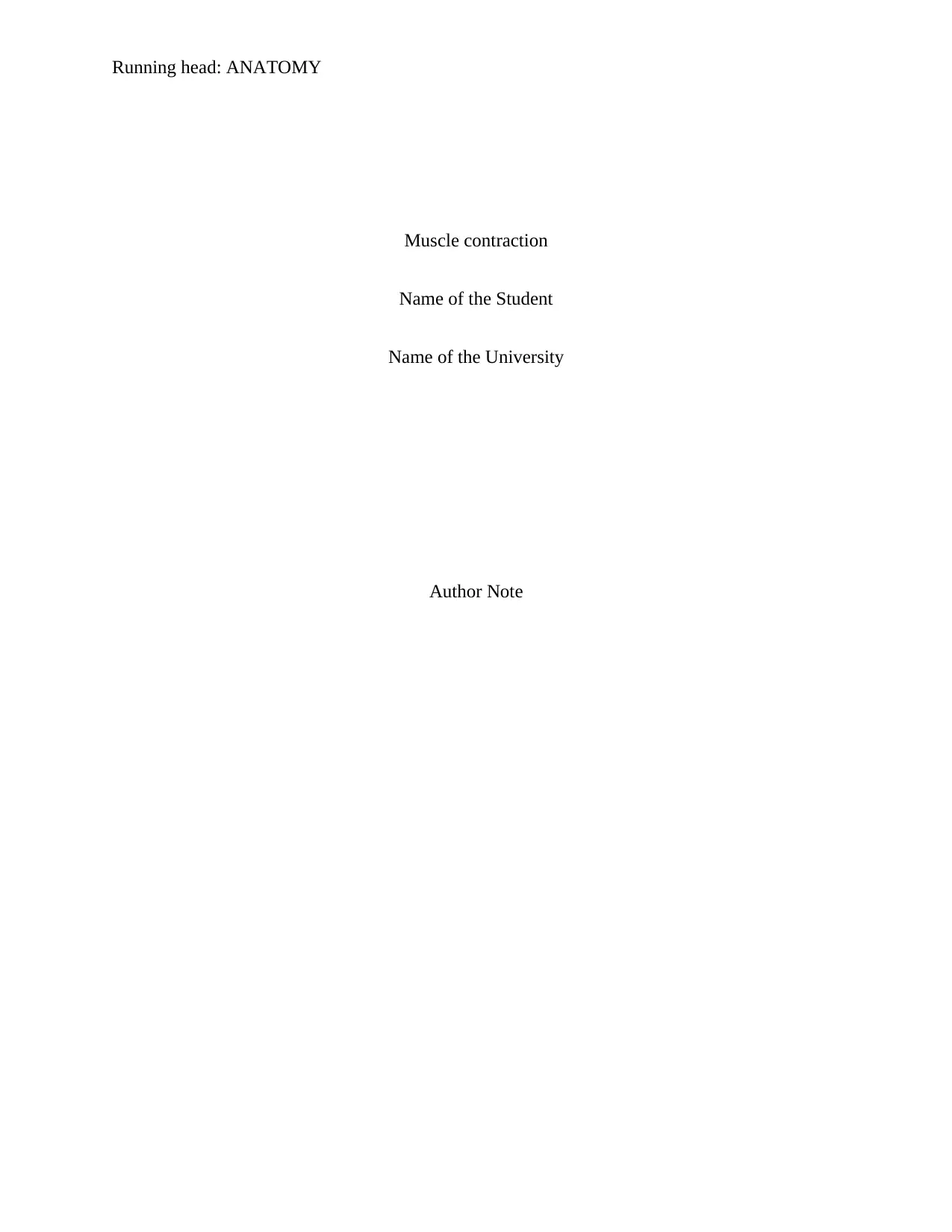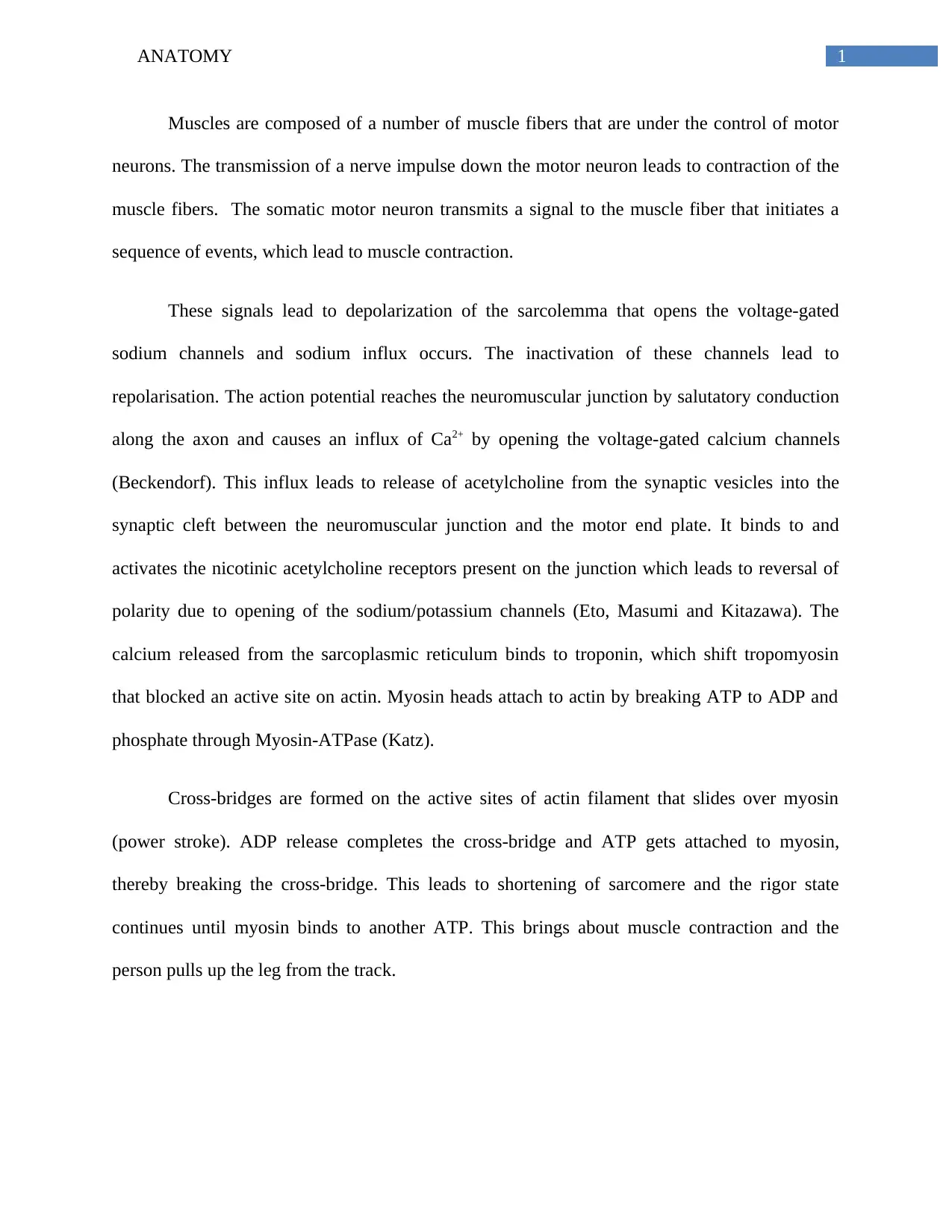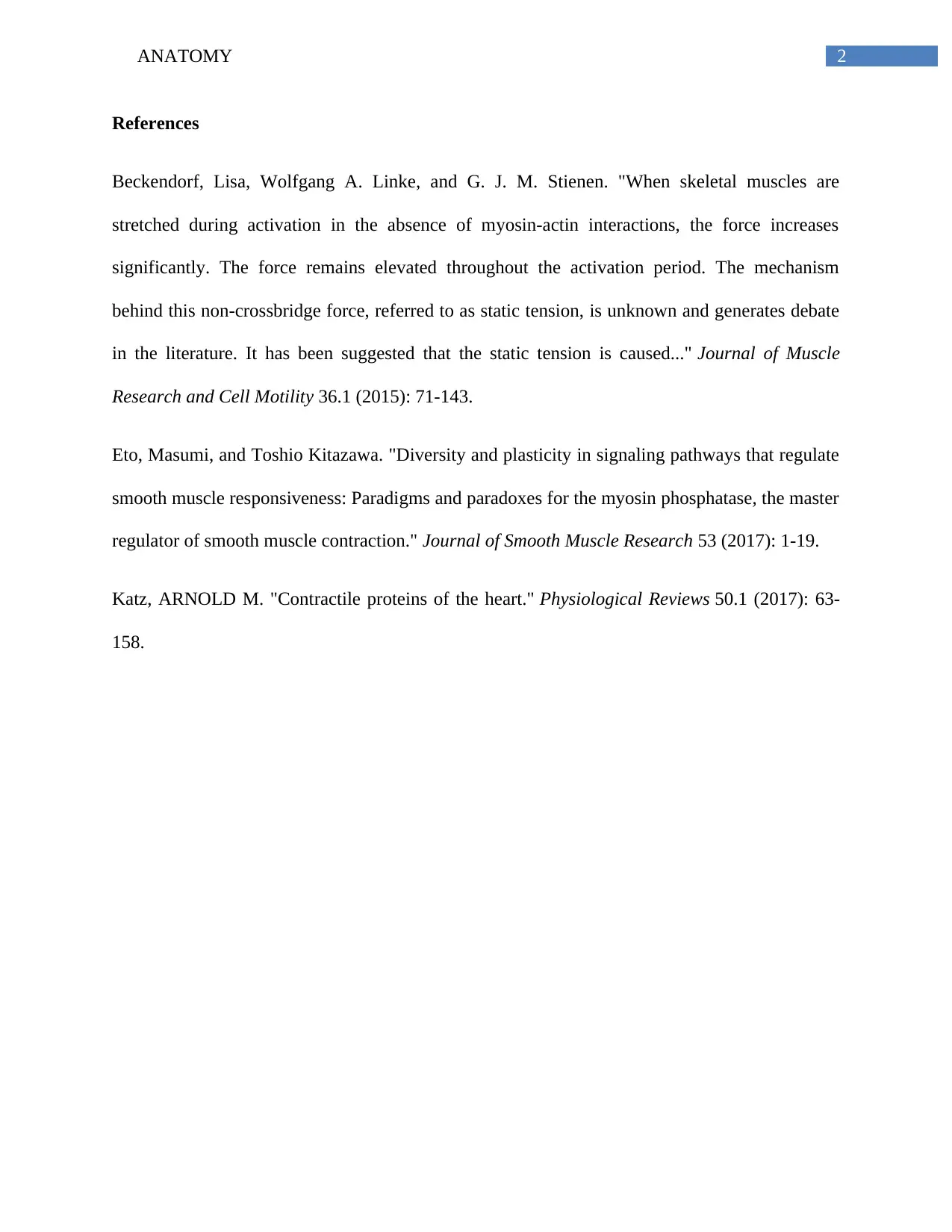University Anatomy Assignment: Muscle Contraction Mechanism
VerifiedAdded on 2020/04/15
|3
|467
|366
Homework Assignment
AI Summary
This assignment delves into the intricate process of muscle contraction, beginning with the role of motor neurons in initiating the process. The assignment explains how the nerve impulse leads to the release of acetylcholine at the neuromuscular junction, which triggers a cascade of events. It describes the influx of calcium ions and the subsequent binding to troponin, which allows myosin heads to bind to actin filaments. The assignment outlines the process of cross-bridge formation, power stroke, and the release of ADP, leading to the shortening of the sarcomere and ultimately, muscle contraction. References to relevant research articles are provided to support the explanation of the mechanism.
1 out of 3









![[object Object]](/_next/static/media/star-bottom.7253800d.svg)